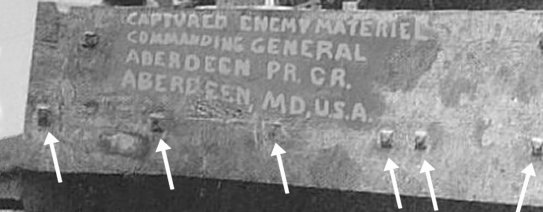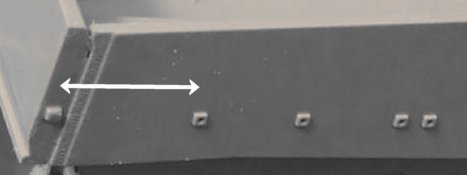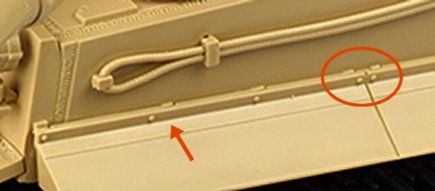About this detail of the Tiger
On each side of a Tunisian Tiger there was a mudguard running the complete length of the hull. It was made of 4 segments, with the rear two being slightly longer than the front two. Each segment was fixed to the hull wall by 4 bolts.

This photo of a captured Tiger shows the hull side wall. The small square lumps have bolt holes where the mudguard segments can be attached. Notice that there are 2 bolt positions close together at the breaks between segments. Also, notice that the front bolt hole, at the left of the photo, is spaced equally with the other ones.

Looking at the same area on the Rye Field model, we can immediately see a problem. The foremost bolt position is spaced out more than the other ones. This would never happen on a real Tiger.
It's hard to avoid the conclusion that Rye Field's designer forgot to allow for the front wall of the hull. It makes this panel longer when it's installed. Then, when the mistake was noticed, instead of moving all the bolts into their correct positions, he or she simply moved the front one.
Now, let's look at Rye Field's mudguards.

This is the same place on the model, with the mudguard installed. The front segment is longer than the second segment; they should be the same. If they were the same length, the hull front wall would not be covered. Once again, it seems the designer forgot about the hull front wall, and then "fudged" the parts instead of fully correcting them.

Looking more closely, we see more problems. The "fudging" of the bolt positions was itself badly done; some of the bolts don't line up with their bolt holes now.
There is another, unrelated error. At the breaks between mudguard segments there are 2 bolts close together. Their distance is correctly modelled on the hull wall, but not on the mudguard. So, the bolts at all of the joints fail to line up with their bolt holes.